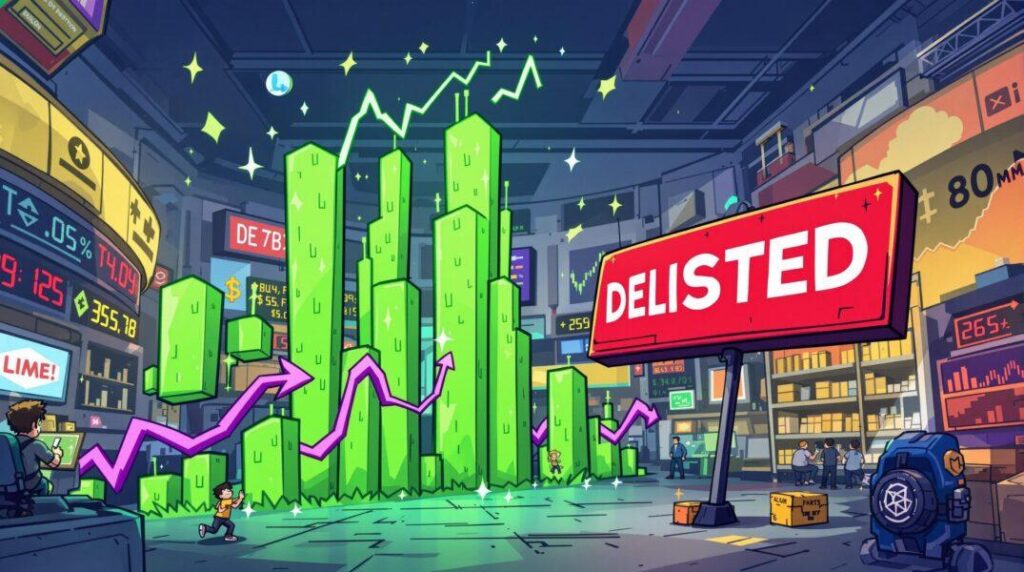Decoding the Extraordinary 289% Surge of STRIKE Token Amid Delisting Uncertainty
In the volatile world of cryptocurrencies, unexpected and significant events often take center stage, leaving both investors and analysts intrigued. The recent surge of the STRIKE token, amidst talks of potential delisting from major South Korean exchanges like Upbit and Bithumb, has stunned the market with a remarkable 289% increase. This unprecedented price rally has sparked discussions, challenging conventional market wisdom and shedding light on the unique dynamics at play within the crypto sphere.
The Unprecedented Rally of STRIKE Token
Following the delisting announcement by Upbit on July 21, the STRIKE token initially tumbled to approximately 7,600 won ($5.52). However, in a surprising turn of events, its value skyrocketed to 29,590 won ($21.47) on Upbit by July 23, marking a staggering 289% surge from its lowest point. This dramatic upswing has triggered a flurry of speculations within the cryptocurrency community regarding the underlying factors driving this unexpected surge.
Possible Triggers for the Surge
While the precise catalyst behind the surge of the STRIKE token remains elusive, several theories have surfaced:
- Short Squeeze Dynamics: There are speculations that a short squeeze scenario might have unfolded, forcing short sellers to close their positions as the price surged suddenly.
- Low Liquidity and Market Manipulation: Reduced liquidity post-delisting could have made the market susceptible to manipulation, with traders potentially capitalizing on price differentials across various exchanges.
- Arbitrage Opportunities: Discrepancies in prices across exchanges may have enticed traders looking to profit from buying low and selling high across different platforms.
- Speculative Trading: It is plausible that speculative trading or opportunistic buying temporarily fueled the surge, disregarding the looming delisting threat.
As per the latest data, the STRIKE token continues to trade at 26,300 won ($19.09) on Upbit, indicating ongoing volatility even after the initial spike.
Delisting Rationale and Risks
Delisting from major exchanges like Upbit typically signals significant hurdles for a cryptocurrency. Reasons for delisting often include low trading volume, project inactivity, regulatory issues, technical deficiencies, or failure to meet exchange standards. While the specific reasons for the potential delisting of the STRIKE token remain undisclosed, the aftermath of such an action usually diminishes the token’s accessibility and prospects.
Trading delisted tokens carries substantial risks, including extreme volatility, low liquidity, price discovery challenges, potential loss of value, regulatory uncertainties, and more. Engaging in transactions involving tokens on the verge of delisting demands caution, thorough research, and a deep understanding of the associated risks.
Insights for Traders Amid Market Volatility
For traders attracted to high volatility or holding tokens facing delisting, adopting a prudent approach is paramount:
- Conduct thorough due diligence.
- Implement sound risk management practices.
- Avoid making impulsive trading decisions.
- Grasp market dynamics.
- Develop clear exit strategies.
While opportunities for profit exist, safeguarding capital and comprehending market intricacies are crucial in navigating such precarious situations.
Implications of the STRIKE Token Saga
The exceptional surge of the STRIKE token underscores critical aspects of the crypto market, including performance arguments, exchange responsibilities, investor education significance, and regulatory implications. Such events prompt introspection on market dynamics, regulatory oversight, and investor awareness within the cryptocurrency landscape.
Concluding Thoughts on Crypto Market Dynamics
The astounding surge of the STRIKE token amidst delisting uncertainties serves as a stark reminder of the unpredictable nature of the crypto market. While these occurrences may present short-term opportunities, they also harbor risks that necessitate astute risk management. As the digital asset space evolves, knowledge and vigilance remain paramount for stakeholders navigating this dynamic financial landscape.


